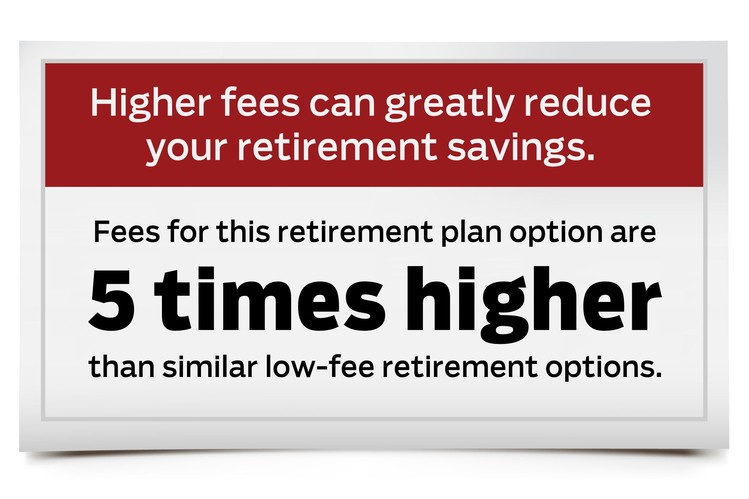The Debate over ETFs in 401(k) Plans
Post on: 6 Май, 2015 No Comment

Related Content
Exchange-traded funds are one of the fastest-growing segments of the financial services industry. But they have been very slow to catch on with retirement plans. San Francisco–based discount brokerage firm Charles Schwab wowed the market in early February when it unveiled an ETF-only 401(k) platform after several delays and three years of development. Schwab’s new platform offers access to roughly 80 different ETFs from a variety of sectors, including commodities, precious metals and emerging-markets bonds, which are not typically found on retirement plan menus.
In contrast to mutual funds, a typical retirement savings vehicle, ETFs offer intraday pricing, no early redemption fees or minimum holding periods and lower management fees. Schwab asserts that its platform can slash retirement plan costs by 90 percent, compared with plans using actively managed mutual funds, and by 30 percent, compared with plans with index mutual funds. Schwab’s ETF-only 401(k) platform will charge an average of 10 basis points for every $10,000 invested, which works out to $10.
Over time, differences in basis points add up. The Fund Analyzer on the Financial Industry Regulatory Authority website shows that for each $10,000 invested in the SPDR S&P 500 ETF Trust (SPY), which returns an average 5 percent over 20 years, the charge is $9 annually, for a total cost of $302. Yearly fees over two decades for the Vanguard 500 Index Fund (VFINX), which charges $17 per $10,000 annually for the investor class, come up to $565. In contrast, an investor in the largest actively managed U.S. mutual fund, Growth Fund of America (AGTHX), run by Los Angeles–based Capital Group Companies’ American Funds division, would pay an eye-popping $2,062.89 after 20 years, given the fund’s annual management fee of $70 per $10,000 invested in the same scenario. And that’s not including the fund’s 5.75 percent sales load. Schwab doesn’t charge ETF providers to be listed on its platform and doesn’t have any revenue-sharing agreement with them.
Some industry insiders believe retirement plan providers have been slow to include exchange-traded funds in 401(k) plans because — unlike mutual funds — ETFs don’t offer revenue sharing as do mutual funds.
“A considerable source of a plan provider’s compensation comes from revenue-sharing arrangements they have brokered with various mutual fund companies,” Stephen Rischall, vice president and financial adviser at 1080 Financial Group in Los Angeles, said in an e-mail. “It would negatively impact revenues collected by the insurance and investment companies providing the platform.”
Schwab has received a few commitments to sign on to its new platform later this year, says Mike Peterson, a director of public relations at the firm’s office in Richfield, Ohio. Schwab joins the ranks of ShareBuilder and TD Ameritrade, both of which started offering ETFs in their 401(k) platforms years ago.
Adding ETFs to retirement plans is like making Apple software run on Windows-based computers. Retirement plans’ technology and record-keeping systems were created to accommodate only mutual funds, which are priced just once a day. 401(k) platforms were not initially designed to handle bid-ask spreads, intraday pricing or brokerage commissions that come with exchange-traded vehicles. ETFs did not offer fractional ownership like mutual funds in which clients can invest $100 every month and buy half a share each time. Offering ETFs in 401(k) platforms ends up costing more than mutual funds because ETFs technically have to be converted into mutual funds under the hood, which creates an added cost, says Robert Massa, director of retirement at Ascende, a retirement consulting and investment advisory firm in Houston.
“If you’re not on that Schwab platform, it’s not worth doing because it ends up becoming more expensive,” says Massa. “And if you can only trade it once a day, you’re back to having a mutual fund.”
Fees for ETFs are much more expensive compared with rock-bottom fees of institutional shares of some mutual funds. Participants in plans offered by mid-, large- and mega-cap size businesses pay as little as 2 basis points, or $2 for every $10,000 in assets under management, for institutional share classes of index mutual funds. On average, 401(k) plan participants paid fees amounting to 0.63 percent of assets, less than half the average mutual fund management fee of 1.4 percent in 2012, according to the Washington-based Investment Company Institute.

In addition, business owners have no interest in offering niche slices of the market or intraday trading in their company retirement plans, says Winfield Evens, director of outsourcing investment strategy at Lincolnshire, Illinois–based investment consulting firm Aon Hewitt, which is among the top 401(k) plan administrators in the U.S.
“It’s incumbent upon the ETF world to convince us it’s a good idea, not the other way around,” says Evens. “I am completely disabused of the idea that there’s a story here for the institutional defined-contribution-plan sponsor until the market shows me otherwise.”
Another of the country’s largest defined-contribution-plan providers, Malvern, Pennsylvania–based Vanguard Group, has received interest in ETFs mostly from smaller businesses with less than $5 million in assets under management, because they don’t have access to the lower-cost institutional shares of index funds.
Including ETFs in a 401(k) plan could be as easy as creating a brokerage window, which can trade anything, within the retirement account. IndexIQ, a Rye Brook, New York–based asset management firm which offers 13 ETFs and has $1.3 billion in assets under management, has plenty of growth opportunities without targeting 401(k) plans, says Adam Patti, CEO and founder of IndexIQ. When the largest retirement platforms start offering ETFs, he will consider changing his distribution strategy.
“We don’t have the market power to convince a trillion-dollar 401(k) platform to offer a one-off ETF, because it’s a major change in their technology and accounting,” says Patti. “There’s no incentive for them to offer ETFs if they have a captive audience with their own mutual fund complex.”














